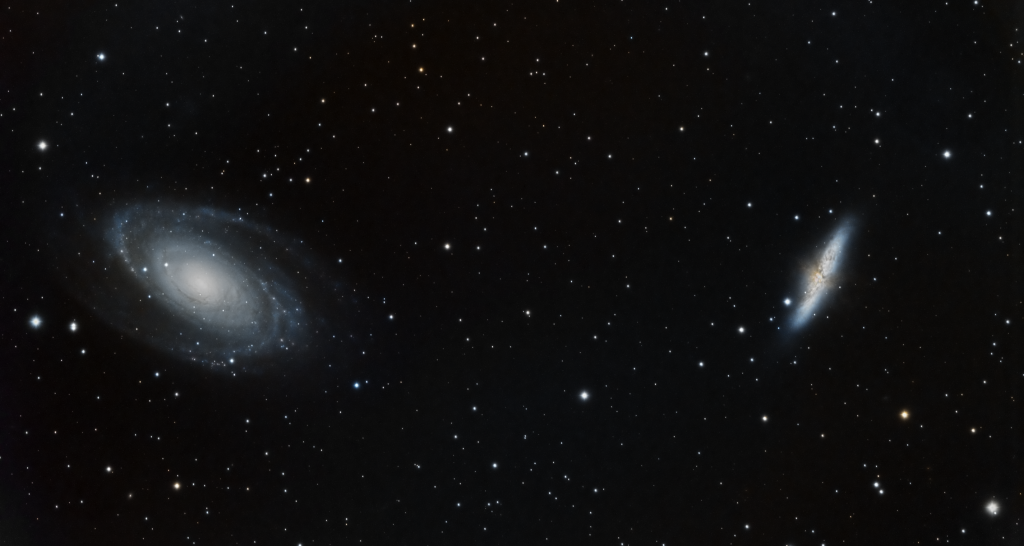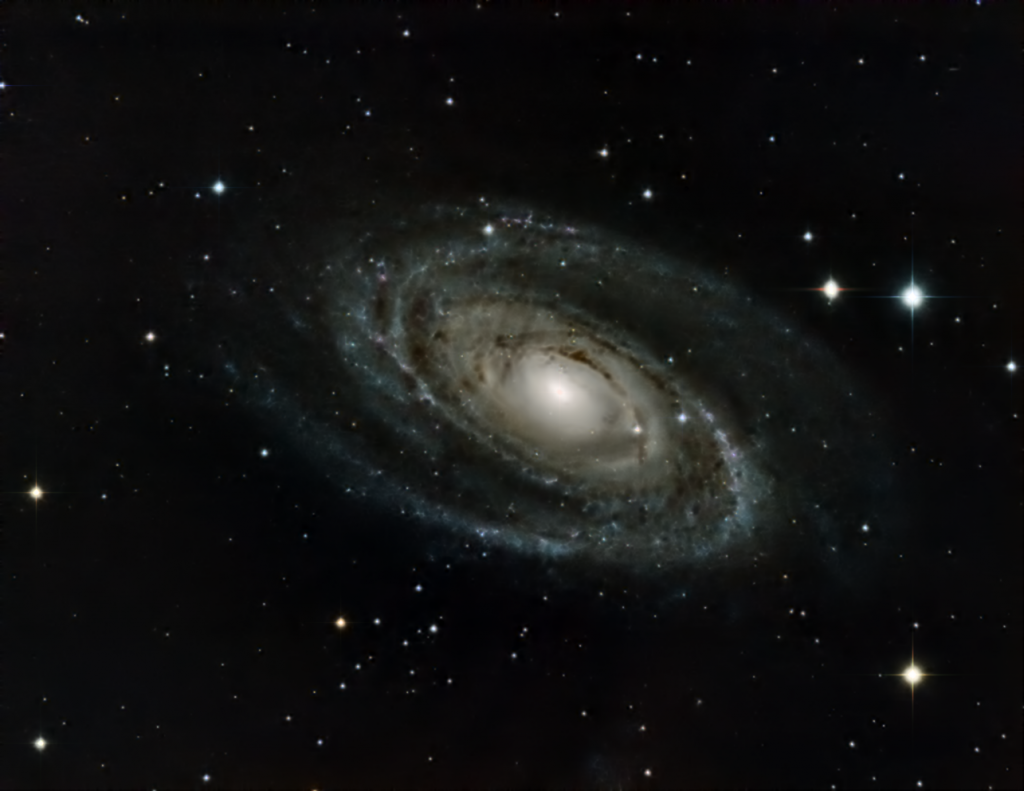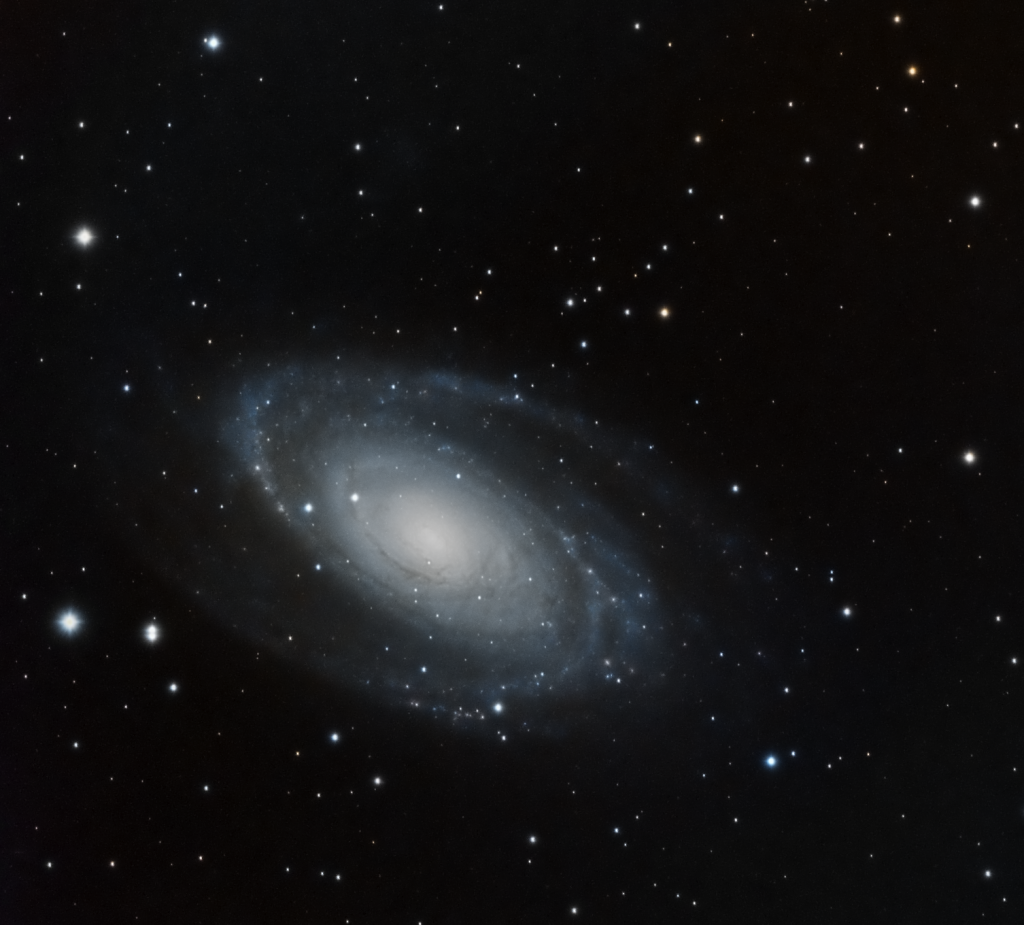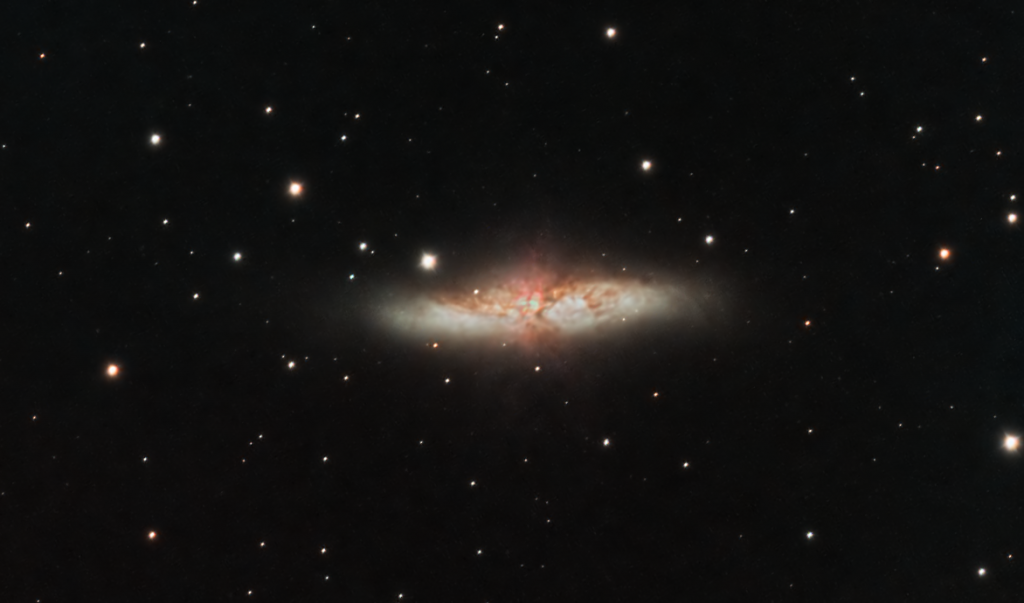
Similar Posts

The “Silver Sliver” Galaxy
Try saying that three times fast! Fortunately, the “Silver Sliver Galaxy” has a formal name that’s easier to pronounce: NGC 891. It’s about 30 million light-years away, and is thought to be very similar to what our own Milky Way galaxy would look like when viewed edge-on. Explore the wider-field image; click on it for…

Sombrero Galaxy
M104 is known as the “Sombrero Galaxy” due to its visual appearance – but a deep, long-exposure image reveals its true structure. It’s a lenticular galaxy about 30 million light-years away, about 30% the size of our own Milky Way galaxy.

The galaxy NGC2841, 46 million light-years away.
This is a somewhat obscure target; at 46 million light-years distant, it’s hard to capture much detail on it from Earth. But that’s what makes it interesting and challenging! Located within the constellation Ursa Major, this is a flocculent spiral galaxy notable for its massive central core. Look around in the background, and you’ll find…

The Horsehead and the Flame
I trained my telescope at this pair of nebulas in Orion for a total of 10 hours. On the right is the iconic Horsehead nebula – actually a dark cloud of gas in front of the illuminated nebula behind it. To the left is the Flame Nebula. In between, in the upper-left, is the bright…
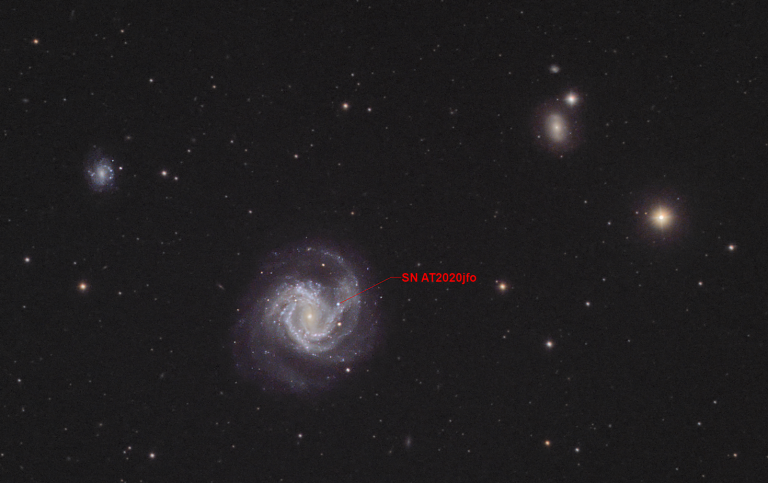
A Supernova 50 million light-years away!
Highlighted here is a recently discovered supernova in the galaxy M61, over 50 million light-years away! This exploding star outshines the entire core of its own galaxy, and many of the much closer stars seen within our Milky Way. The sheer power of this stellar explosion is unfathomable. It’s 50 million light-years away, which means…

The Pelican Nebula, take 2
Another revisit of an old target, with better gear and better conditions. This is the Pelican Nebula in the constellation Cygnus. Shot in narrowband over one night, and presented in the “Hubble palette”. Two takes – one wider field, and one close-up with the stars removed. In both cases the image is rotated and mirrored…

